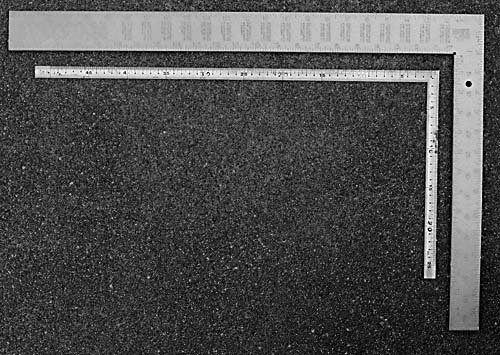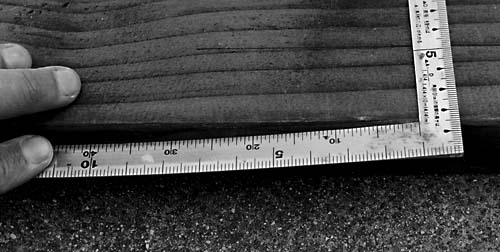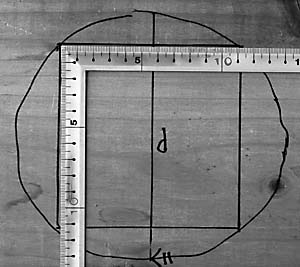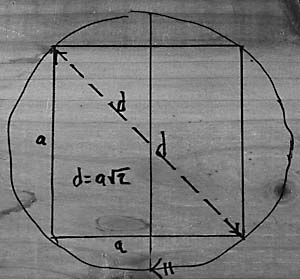The American steel square dates from the industrial revolution. It served as a form of calculator in the pre-electronic days and was the subject of a number of treatises and innovation. In contrast, the Japanese square - called a "sashigane" is much simpler, but it has a few features that the American square doesn't which make it better suited for Japanese style woodworking and carpentry.
The first obvious difference is in the size. There are a few explanations for this. First the US square is typically 24 inches by 16 inches. These dimensions match typical framing spacing. Most studs are on 16 inch or 24 inch centers. Making the square 36 inches would make it unwieldy. Japanese carpenters work with a measurement called the "Shaku" which is about 30.3 cm or a bit less than a foot. The shaku is a sixth of the length of a tatami mat which forms the traditional module for Japanese architecture. It is my supposition that the American steel square is bigger because it could be bigger. The availability of large quantities of relatively inexpensive, mass-produced rolled-steel made large squares economical - something that wasn't as possible when hand-forging steel. American manufacturers took advantage of this and stamped rafter tables, inch-decimal conversions, octagon scales and all manner of other arcane and now abandoned reference material on the broad sides of their squares.

Of course size has its disadvantages too. The wide American square is inflexible, while the Japanese square can bend. This is useful when drawing a line square to an already planed edge. The following picture shows the use on a dimensioned piece of lumber, but on a log it becomes more useful.

Coming from a tradition of starting with lumber that is in round form (logs basically) the markings on the Japanese sashigane are intended to help with this. For example on the back side of the sashigane is a scale with measurement in "kaku-me". This unit is equal to the normal measurement (may be centimeters, shaku or even inches) multiplied by the square root of 2 (1.41427). This is used to determine what size square lumber can be cut out of a round log. First place the kaku-me scale across the end of the log and take a reading. In this example it is about 11.

I've drawn a square inside the circle showing the size that can be obtained and also how the square root of two was obtained (you can use the pythagorean theorem to prove it to yourself.)


Finally, the profile of the sashigane is not flat like the American steel square. because Japanese carpenters use ink for marking rather than pencils, the edges are relieve to avold sucking the ink under the square and causing smearing. Sorry I don't have a diagram showing this, but both edges have a slight bevel on both top and bottom and there is a hollowing out in the center.
There are other differences which I don't have time to write about here, but it is interesting to note that the utility of both of the different squares is well tuned for the type of use they are put to. Even if you have no use for metric or classical Japanese units of measure, the light weight and flexibility of the Japanese square is very useful for a lot of things. It is definitely worth having both in the toolbox.
For more about Japanese carpentry, "Complete Japanese Joinery" offers a good instruction in tools, techniques and typical joints/details.

Comments (1)
Please can you detail the exact steps shown in your illustration using the sashigane to determine the size of the square for cutting a round log...I see the diameter is close to 11. But, how does that translate to the each side of the square drawn in your pictures...?
Gratefully,
Ron
The Kaku-me scale is used to find the diameter. Then use the regular scale to measure out a square with sides of the same number.
Posted by RW Shea | October 10, 2012 6:35 AM
Posted on October 10, 2012 06:35